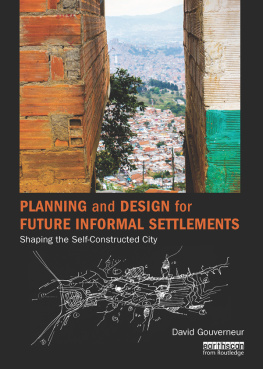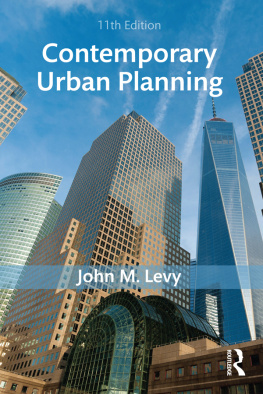ROUTLEDGE LIBRARY EDITIONS:
COMPARATIVE URBANIZATION
Volume 1
THE EUROPEAN CITY
THE EUROPEAN CITY
A Western Perspective
D. BURTENSHAW, M. BATEMAN
AND G. J. ASHWORTH
First published in 1991 by David Fulton Publishers
This edition first published in 2021
by Routledge
2 Park Square, Milton Park, Abingdon, Oxon OX14 4RN
and by Routledge
52 Vanderbilt Avenue, New York, NY 10017
Routledge is an imprint of the Taylor & Francis Group, an informa business
1991 David Burtenshaw, Michael Bateman and Gregory Ashworth
All rights reserved. No part of this book may be reprinted or reproduced or utilised in any form or by any electronic, mechanical, or other means, now known or hereafter invented, including photocopying and recording, or in any information storage or retrieval system, without permission in writing from the publishers.
Trademark notice: Product or corporate names may be trademarks or registered trademarks, and are used only for identification and explanation without intent to infringe.
British Library Cataloguing in Publication Data
A catalogue record for this book is available from the British Library
ISBN: 978-0-367-75717-5 (Set)
ISBN: 978-1-00-317423-3 (Set) (ebk)
ISBN: 978-0-367-77123-2 (Volume 1) (hbk)
ISBN: 978-0-367-77128-7 (Volume 1) (pbk)
ISBN: 978-1-00-316990-1 (Volume 1) (ebk)
Publishers Note
The publisher has gone to great lengths to ensure the quality of this reprint but points out that some imperfections in the original copies may be apparent.
Disclaimer
The publisher has made every effort to trace copyright holders and would welcome correspondence from those they have been unable to trace.
THE EUROPEAN CITY
A Western Perspective
D. BURTENSHAW, M. BATEMAN
and
G. ASHWORTH
David Fulton Publishers Ltd
2 Barbon Close, London WC1N 3JX
First published in Great Britain by
David Fulton Publishers 1991
Note: The right of David Burtenshaw, Michael Bateman and Gregory Ashworth to be identified as the authors of this work has been asserted by them in accordance with the Copyright, Designs and Patents Act 1988.
Copyright David Burtenshaw, Michael Bateman and Gregory Ashworth
British Library Cataloguing in Publication Data
Burtenshaw, D. (David) 1939-
The European city: a Western perspective.-2nd ed.
1. Western Europe. Cities. Environment planning
I. Title II. Bateman, M. (Michael) 1944- III. Ashworth,
G. J. (Gregory John) 1941- IV. Burtenshaw, D. (David)
1939-. City in West Europe
711.4094
ISBN 1-85346-030-3
Typeset by Chapterhouse, The Cloisters, Formby, L37 3PX
Printed and bound in Great Britain by
Biddies Ltd, Guildford and Kings Lynn
The use of the term the West European City strongly implies that the cities of the sub-continent have characteristics in common which give them a distinctiveness that sets them apart from cities developed elsewhere. It is a paradox that, in a large part, this distinctiveness is a result of the variety of historical experiences which have contributed to the physical fabric in which citizens live, work and play. In many cases it is the history of the nation or, occasionally, the nations in which a particular town has been situated that have shaped the towns development from age to age. Each stage in national development has, in its turn, brought about corresponding changes in the form and functions of towns and cities. In this way the city in West Europe becomes a palimpsest representing the physical expression in the built environment of successive ideologies at each period of development. What the events of 1989-1990 might cause can only remain conjecture at this time. However, the changes have not occurred simultaneously throughout Western Europe and therefore part of this urban distinctiveness has resulted from the differential effects of policies and social movements.
The role of history
The historical experience has been sharp and dramatic for many cities. In some cases, for instance, it involved the loss of an imperial role with consequent effects on the imperial city. In 1919 as a result of the Treaties of St Germain and Trianon, Vienna was transformed from the capital of an empire of 52 million persons to the capital of a dismembered country with approximately one-tenth of its former population. Past capitals abound in Europe: Braunschweig, Munchen, Turku. More recently we can point to West Berlin as an exclave of the Federal Republic, divested of its capital status by the events of the cold war, and divided and distinct from East Berlin, Hauptstadt Berlin, the former capital of the German Democratic Republic. The last vestiges of Berlins prewar role remain in the Tiergarten and in the boundaries of 1920 Berlin even if the past was less than glorious. By 1990 the map of Berlin appears to be in the process of redrafting and one can only speculate on the impact of a reunified city on the form and function of twenty-first century Berlin. For other cities the dramatic change took the form of the truncation of a trading hinterland, as in Londonderry in 1920, or Hamburg and Lubeck in 1945, or Trieste at the same time. In other cases, the dramatic changes were more frequent as the nation states of Europe fought over the cultural shatter belt between the French and German peoples. Saarbrckens national allegiance oscillated for a past century. Only since 1960 has the city or its near neighbours in the Saarland been an integral part of West Germany. From 1945 until 1960 French laws, customs, education and urban development fashioned the Saarland towns and built a university modelled on the French pattern of higher education. This was not the first period of French domination since, as cities in the League of Nations Territory of the Saarland, the cities were subject to French administration from 1920 until 1935. Before that Saarlouis and Saarbrucken had been under French control for a short time in the Napoleonic Wars. The history of other cities in Alsace-Lorraine, such as Metz and Strasbourg, has also been affected by the oscillations of the international boundary over the past century. Boundary changes have left Vyborg with a similar imprint of changed national allegiance. The more one penetrates history from the recent past the greater are the number of cities affected by the changing political map of Europe.
In contrast, other cities have had greatness thrust upon them by the course of history. The relatively sudden promotion of Dublin from the role of a provincial capital to that of the capital of a new republic in 1920 is a case in point. Bonn enjoyed a similar fate a quarter of a century later when it became the temporary capital of the western zones of Germany. While the former was the logical choice, the latter was a mere university town or A Small Town in Germany according to Le Carr, of no great urban status compared with its rivals such as Kassel, Frankfurt or Stuttgart or its near neighbour Cologne. Yet today Bonn-Bad Godesberg is a maturing mixture of government offices, nestling in a suburban sprawl surrounding the old town of Bonn and its elegant spa neighbour, the home of the diplomatic corps. But the radical changes of 1989-90 might leave a new relic of history, an abandoned twentieth-century capital, the first of its kind for a half a century.
















